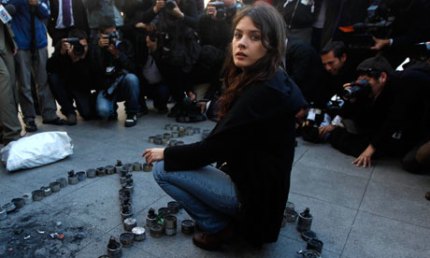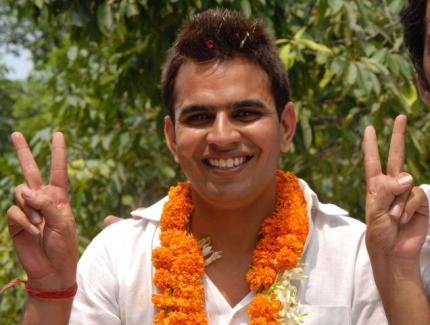Santiago: The youth of Chile are in uproar. Their leader is a 23 year old named Camila Valeijo who is shaking the country, organizing protests and demanding corrupt and/or inept political leaders to step down. She is only the second woman ever to lead the University of Chile’s student union in 105 years (!).
Chilean student leader Camila Vallejo sits among a peace sign created from empty teargas canisters used by police against protesters.
 (Photograph: Roberto Candia/AP)
(Photograph: Roberto Candia/AP)
The protesters’ top target is the unpopular President of Chile, Sebastien Pinera. Students are calling for broad education reforms, more healthcare spending, and the need to address unemployment. These initiatives are amazing when you consider that Chile’s military dictatorship was toppled only 21 years ago, in 1990. Here’s a look at the protests in photos.
When I feel let down with the general apathy of America’s youth, I am rejuvenated to discover that the youth around the world are taking their future into their own hands. Rather than identifying with a generation on a national level, we should consider ourselves members of this global generation. I am relieved to know that this fire still exists, burning deep within to rebel against the institutions that kept us seemingly safeguarded when we were small, and then we slowly realize that these same structures are often a mess of greed and shortsightedness.
You have as much power as you take. Strangely, the more you push, the louder you squawk, the more people take your demands seriously. The youth have the energy, the hope, and the unabashed courage to push national leaders to do better. It only takes a few that are crazy enough to go for it.
I can only smile sardonically at the perpetual paradox of student protests. Do we not learn in kindergarten to share with others, to have patience and a loving heart? Why do we demand more from six-year-olds than we do from our chief ministers? When we reach secondary school, we take history, science, philosophy and literature classes that feature the works of the few people who questioned the status quo. Then why are students who are taking the initiative of change rewarded with tear gas and arrest? I can only hope that history will remember these bold youth more fondly than will their scars and scratches from the streets.
#ChileSolidarity









